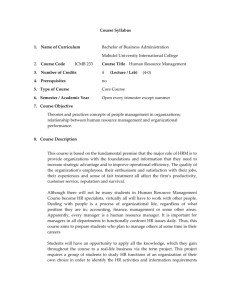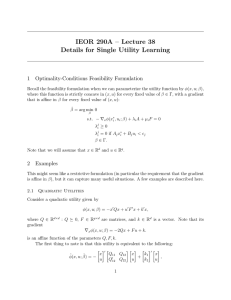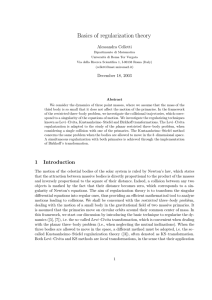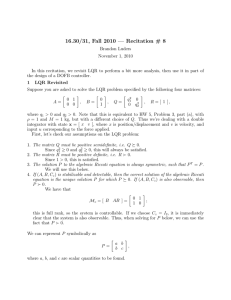. ~ i, - '
advertisement
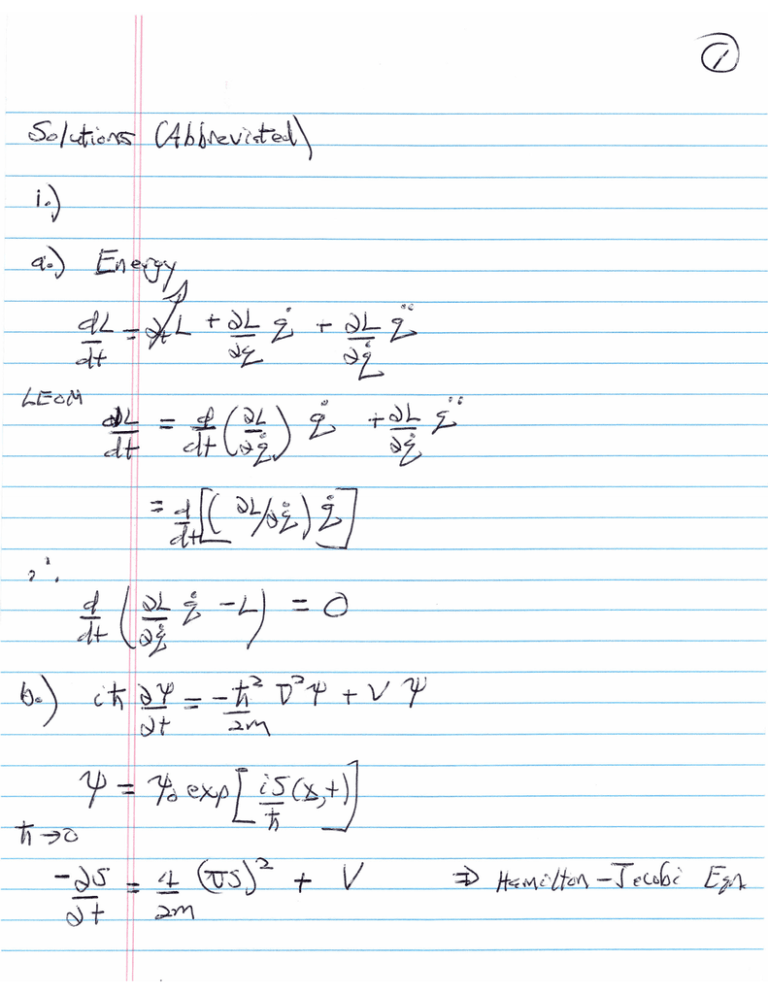
&M~~,~, ~~~-------------------- ~,~~-------------- \'tC· <e ~ _ ~ _ 4\ .-'~ i,-' ------~ __ '2 ~, ~ _ "'. I c:. _ -:-~p ...A ~ fi.- j' t- - - ---J~~~~,-----------------------l-\;r- .: ~ -= - -~ < • ~ J2~jJ t~V':--J,---l _ --31- -= \~i!.J 1.:~._H__--------__ -~\S. --~~' tt ~~. ~ ~:s '- ~-v.~-~.=t>=--. ~~":::::..:J: ~----------------------- .€)! ~).JI ~ d~ - I .., .,.- j J l.--J j I~ ,, •..... -r=-Vre.Jr--I-~~IJ-I-----l~_~~ '21 ~ \~ 6- t t e rnrQoI1z : ecf~'Iw'\ -~~ ~~---------------------__ ~~~ __ ~O~ __ ~·~~I _ Problem 3 A physical system has kinetic energy 1 T = m q̇12 + q̇22 q12 + q22 , 2 and potential energy U= q12 α . + q22 (a) Derive the Hamiltonian and the Hamiltonian equations of motion P for this system. H(q, p) = pq̇ − L(q, q̇) where L = T − U . pi = mq̇i q12 + q22 , for i = 1, 2 So the Hamiltonian is 2 1 p1 + p22 H= 2 +α . 2m q1 + q22 Hamilton’s equations of motion are 1 p i, q12 + q22 m 2 2qi p1 + p22 + α . ṗi = 2 2m q1 + q22 q̇i = (b) Give an explicit expression for the phase space flow and Liouville equation for this system. ~v = (q̇i , ṗi ) , phase space flow ∂ρ ~ 0= + ~v · ∇ρ, Liouville equation ∂t 2 ∂ρ 1 pi ∂ p1 + p22 ∂ 0= + + 2 + 2α qi ρ ∂t m ∂pi q1 + q22 m ∂qi (c) Derive the Hamilton-Jacobi equation for this system. The HamiltonJacobi equation is ∂S ∂S H qi ; + = 0, ∂qi ∂t and since H does not depend explicitly on time we may take S = W − Et. Subtituting H into the above equation yields # " ! 1 1 ∂S 2 ∂S 2 + +α . E= 2 ∂q1 ∂q2 q1 + q22 2m 7 Alternative Solution The q12 + q22 terms in the Hamiltonian are suggestive of a rotational symmetry. Make the following coordinate transformation: √ θ q1 = 2 r cos , 2 √ θ q2 = 2 r sin . 2 With these new coordinates r, θ, the Hamiltonian becomes H= p2θ p2r β + + , 2 2m 2mr r where β = α/4. Thus, this problem is equivalent to the two-dimensional Kepler problem. 8 cP~ I I : i I I i I L.~N\Q\.t ~ L,~s ;~ e9!-
